Spinacia oleracea, commonly known as spinach, is a member of the Amaranthaceae family. As a nutrient-rich leafy green and a cool-season crop, it’s a favorite among home gardeners and is easily compatible with many vegetables and plants. With good companion plants, the spinach plant in your garden can thrive and prosper, resulting in a delicious bounty.
Today, let’s explore the top 15 spinach companion plants to get the most out of your gardening experience.
1. Peas
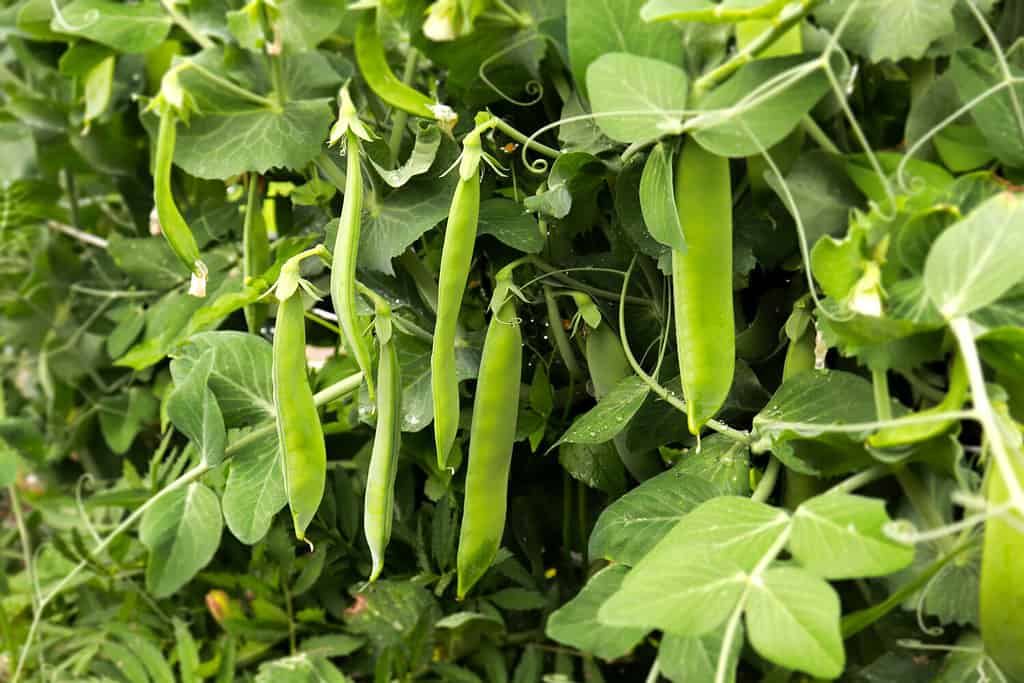
One of the best companion plants for spinach is peas.
©Natallia Ustsinava/Shutterstock.com
Spinach is a cool-weather crop and needs around six weeks of cool weather to harvest. In high temperatures, unfortunately, it often shows signs of bolting. Due to this reason, it’s a great idea to plant spinach under the shades of tall pea plants.
Furthermore, pea plants have a unique ability to harness nitrogen from the air and convert it into a readily available form in the soil. This nitrogen-enriched soil becomes a valuable resource for your spinach, essential for spinach’s healthy growth and development.
2. Eggplant
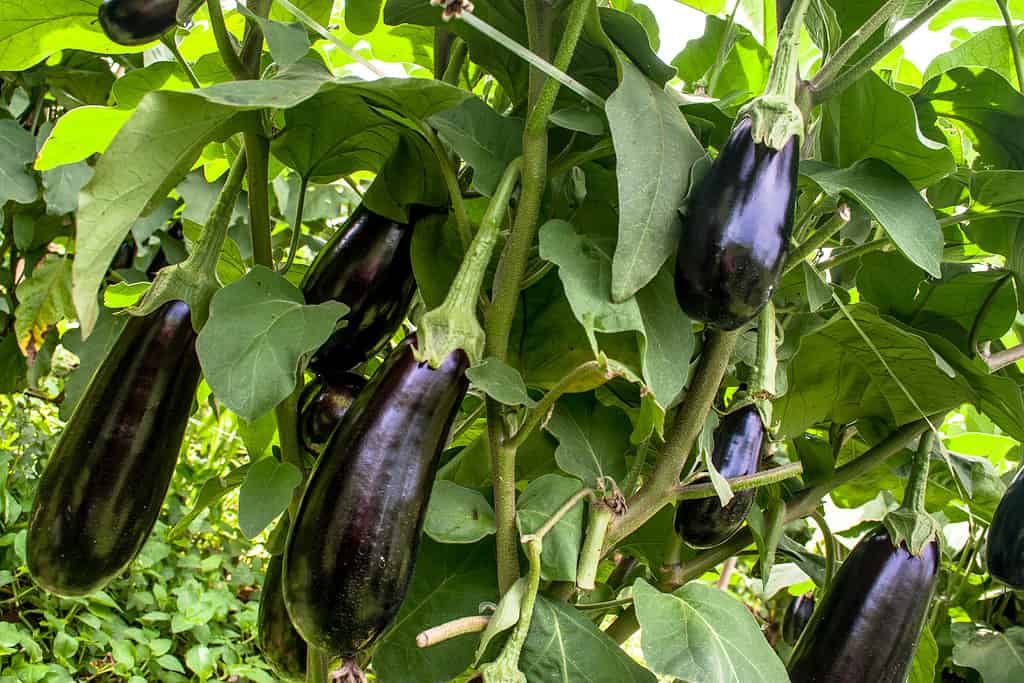
Grow eggplants with your spinach since they have separate nutrient needs.
©Alf Ribeiro/Shutterstock.com
Eggplant is one of the best companion plants to grow alongside spinach because they have separate nutrient needs. This means they won’t compete for the same nutrients in the soil, allowing them to coexist harmoniously without any problems. As a plus, like the pea plant, eggplant also offers shade to spinach to avoid bolting in hot conditions.
3. Lettuce
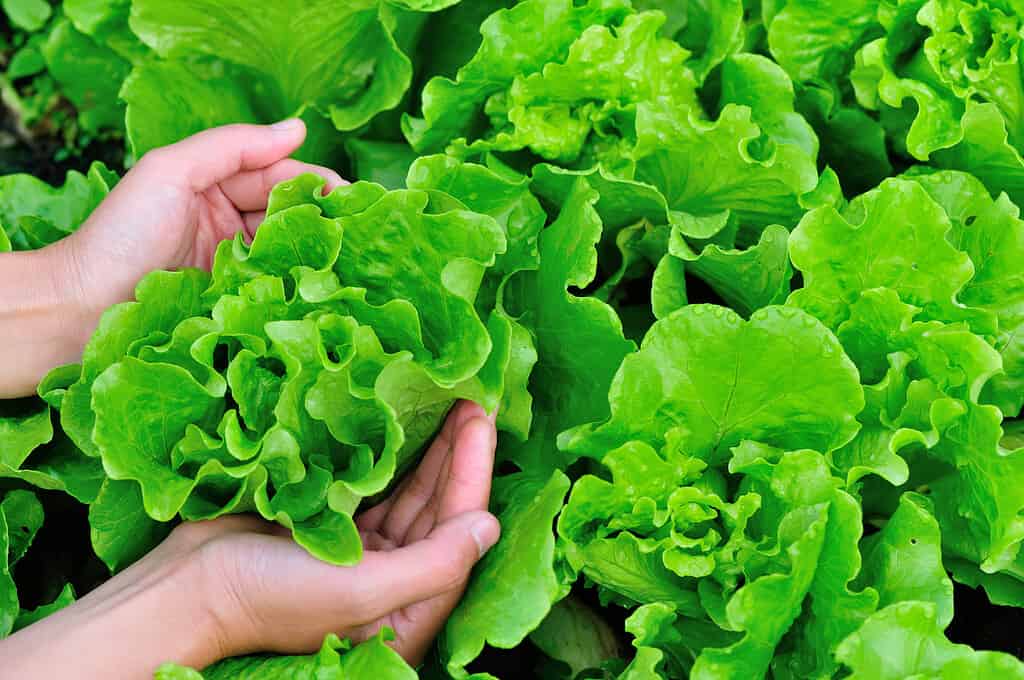
Lettuce has a similar growth pattern to spinach and attracts different pests.
©lzf/Shutterstock.com
One of the most popular plants to grow alongside spinach is, of course, lettuce! Lettuce will keep your spinach disease-resistant, and they tend to attract different types of pests to spinach – pests that have no interest in spinach at all. But best of all, lettuce has a similar growth pattern to spinach, so it makes a lot of sense to plant these plants together. And if you plant these two plants together, they can act as ground cover, keeping the soil cooler for longer. The higher yields you will get from both plants is yet another advantage of planting lettuce as a companion plant for your spinach crop.
4. Radish

These radishes can act as a trap crop.
©Natallia Ploskaya/Shutterstock.com
Radish is a farmer’s favorite companion plant and has a magical effect on your spinach as well. They comprise unique leaves that can allure specific bugs, like leaf miners, towards them. Remember, leaf miners love to eat your spinach. So, by acting as a trap crop, your spinach will be protected from these pesky pests!
5. Brassicas
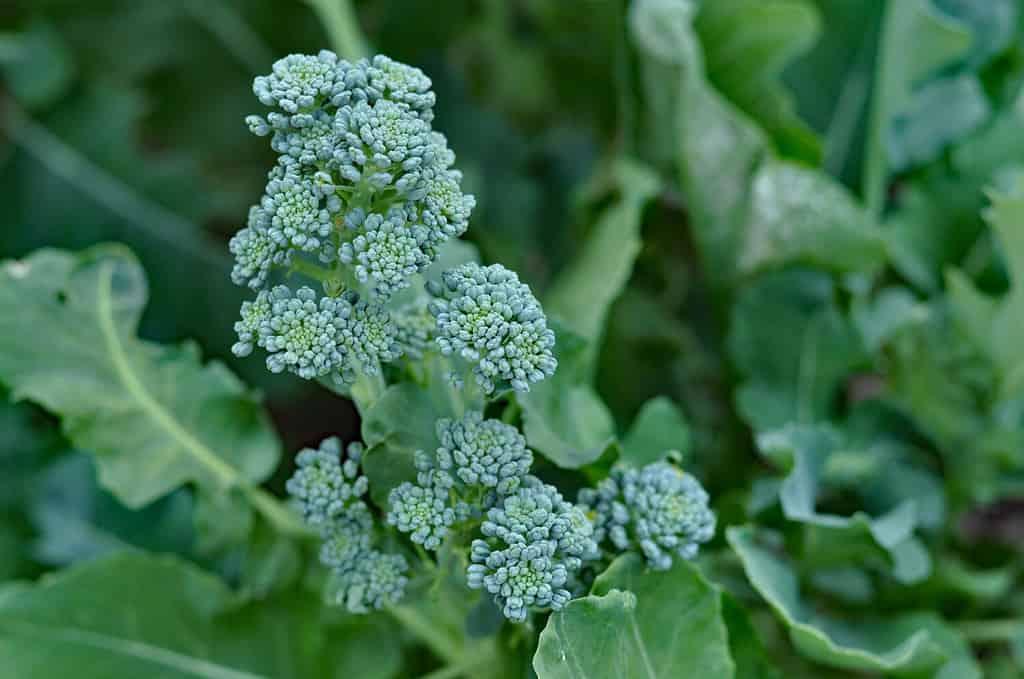
Brassicas, such as broccoli, make great spinach companion plants.
©Verity McColl/Shutterstock.com
The plants from the brassica family, like broccoli, cauliflower, and cabbage, are great spinach companion plants. They are great to plant alongside your spinach, as these plants have different nutrient requirements.
While spinach thrives on nitrogen-rich soil, brassicas require a higher level of phosphorus and potassium. Due to their different nutritional requirements, they can grow together even when fully dormant. Plus, the root systems for spinach and brassicas are located in different soil layers.
6. Strawberries
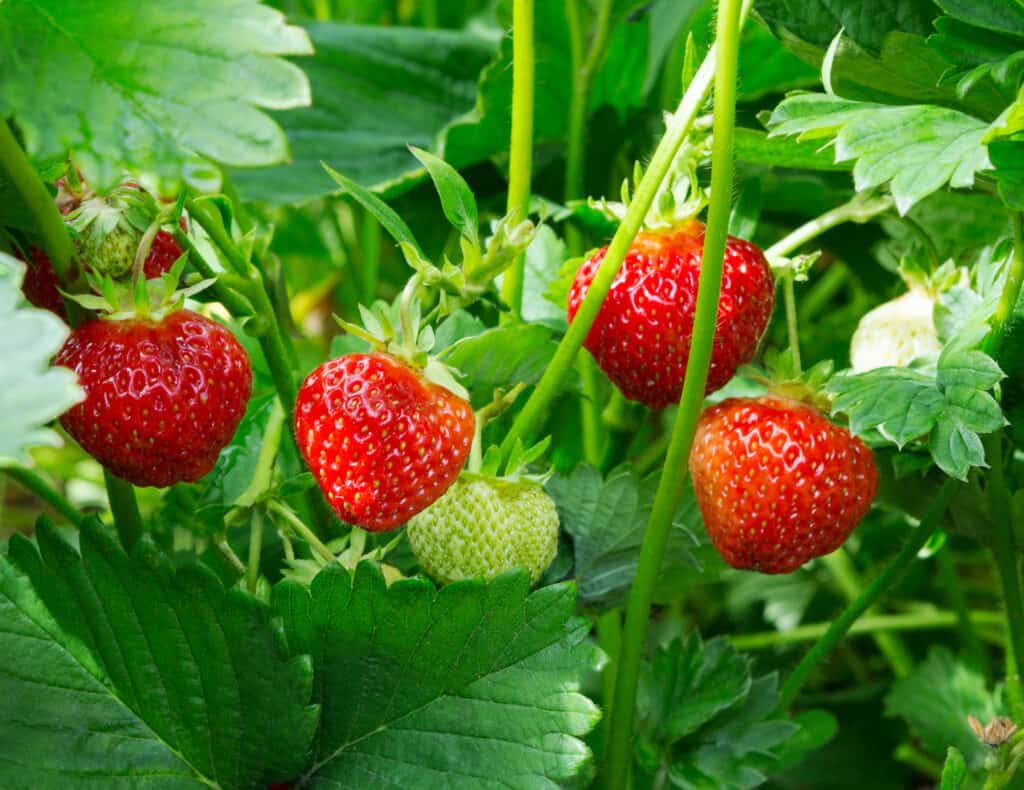
Strawberries can act as ground cover for your spinach, helping keep the soil cool.
©iStock.com/romiri
Many types of berries grow well with your spinach, but strawberries are the ultimate berry companion plant for your spinach crop. Firstly, strawberries occupy completely different soil levels, so they won’t compete with your spinach plant for nutrients.
Moreover, they act as ground cover for your spinach, keeping weeds from attacking and cooling the soil. And since strawberries and spinach take up different above-ground spaces as well, you can really maximize your garden space! Both spinach and strawberries work well together to resist common plant diseases as well.
7. Oats

Another great companion plant for spinach is oats
©Christian Hammer Nielsen/ via Getty Images
Oats could also be an excellent companion plant to spinach as they do not require too much nitrogen from the soil. This way, your spinach will be able to soak up as much nitrogen as it wants, leading to a higher and healthier yield.
If you plant spinach during warmer weather, oats can come in handy. By planting your oats beside your spinach in a row, they can provide adequate shade and prevent the spinach from bolting early.
8. Cilantro
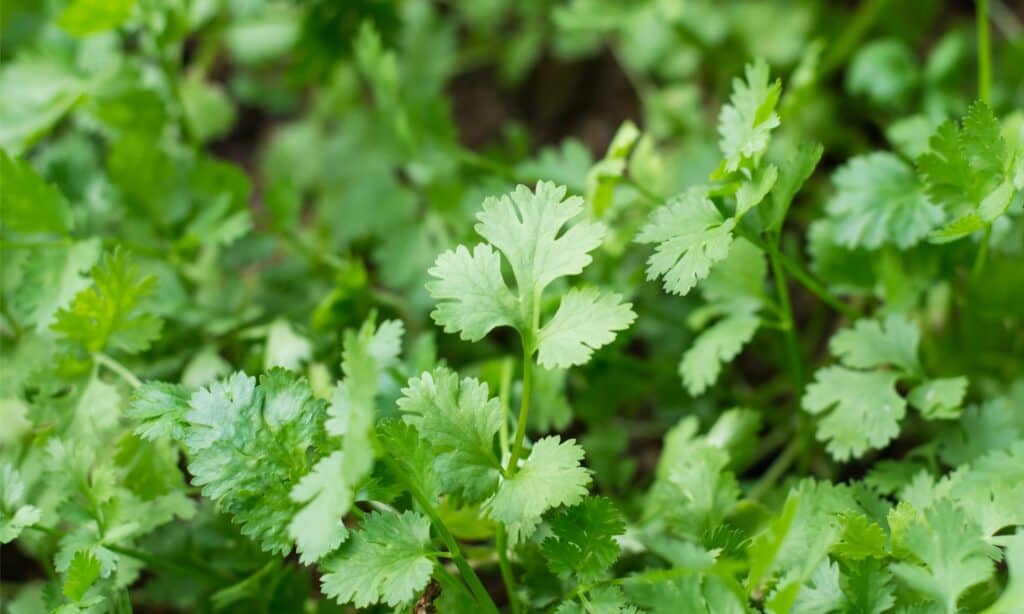
Cilantro can attract beneficial insects.
©iStock.com/Tevarak
Besides vegetables, herbs like cilantro are also great spinach companion plants. Cilantro not only adds flavor to culinary delights but also brings numerous benefits to your garden ecosystem. Notably, cilantro produces beautiful flower clusters that attract beneficial insects like ladybugs, lacewings, and parasitic wasps. These bugs eat other harmful insects, like aphids, that can attack your spinach.
9. Crimson Clover
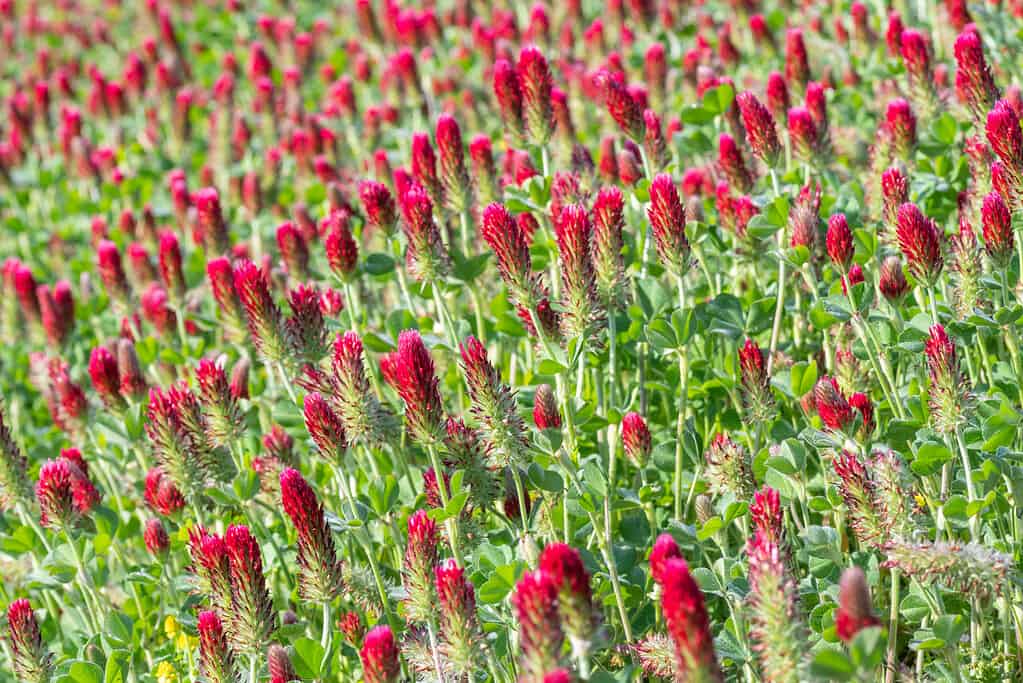
Another good spinach companion plant is crimson clover.
©Marianne Pfeil/ via Getty Images
Crimson clovers are a great spinach companion plant that can do wonders for your garden. The best thing about this plant is its ability to enhance soil health. It holds the soil firmly through its deep root system. This will eradicate any chance of soil erosion and improve natural drainage channels to retain water and moisture.
These crimson beauties are also excellent nitrogen fixers. Through the fascinating process of nitrogen fixation, these plants absorb nitrogen from the atmosphere and convert it into a readily usable form in the soil. In this way, they function as natural fertilizers, enriching the soil with this essential nutrient, which proves highly advantageous for a heavy feeder like spinach.
And how can we forget the scenic beauty these crimson flowers will add to the backdrop of lush greenery?
10. Garlic

Garlic is another cold-weather crop.
©nblx/Shutterstock.com
Since garlic is planted in the fall and harvested in summer, it is a perfect companion plant for spinach, since spinach loves cold weather.
It has many additional benefits as a companion plant to spinach, such as providing extra space. As garlic spends most of its life underground, there is a lot of space in the whole season for shallow-rooted crops like your spinach. Additionally, its pungent smell keeps all the potential pests like aphids, spider mites, and caterpillars away from your spinach.
11. Watercress
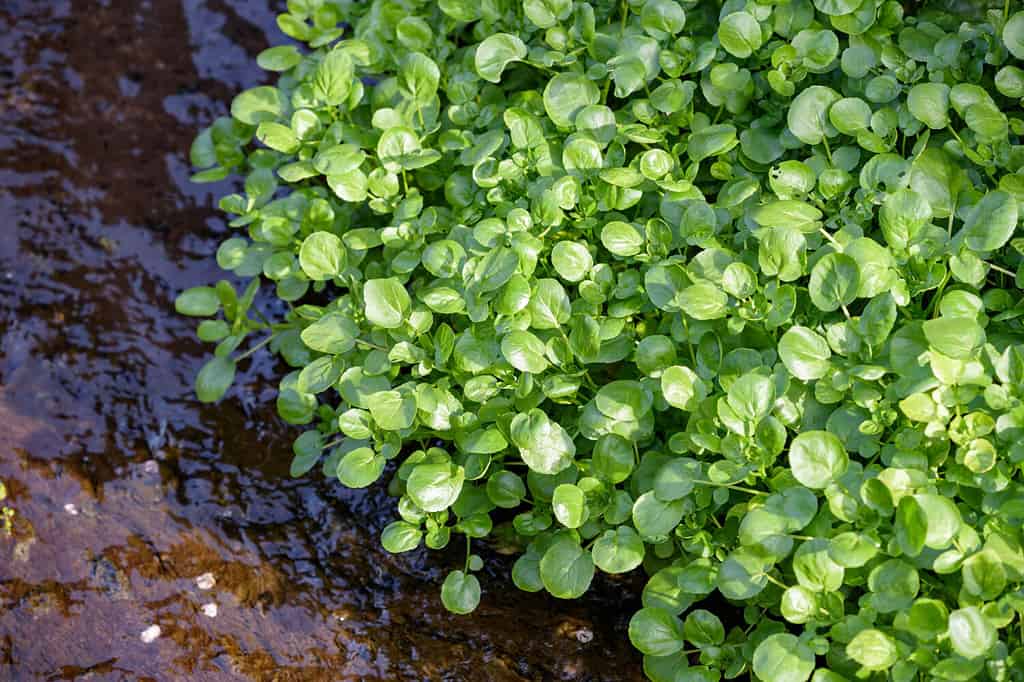
A brassica plant, watercress does not attract similar pests.
©Picmin/Shutterstock.com
Watercress is a quick-growing peppery green vegetable plant from the Brassicaceae family. It does not compete with spinach plants and will not attract similar pests. Furthermore, watercress can act as living mulch around your spinach due to its low-growing nature. Due to different developing patterns, the two plants will not compete for space and can grow harmoniously side by side.
12. Tomato

Tomatoes can help provide some shade to the spinach in the summer.
©Digihelion/Shutterstock.com
This plant is everyone’s favorite garden vegetable, as it is delicious and fairly easy to grow. Tomato is a heat-loving plant, while spinach is a cool-weather crop. Surprisingly, the difference in their temperature requirements can benefit each other. The tomato plant provides shade to the spinach and prevents it from bolting in high temperatures in the summer.
Make sure to plant them in alternative rows while ensuring an adequate distance between the two plants.
13. Marigold
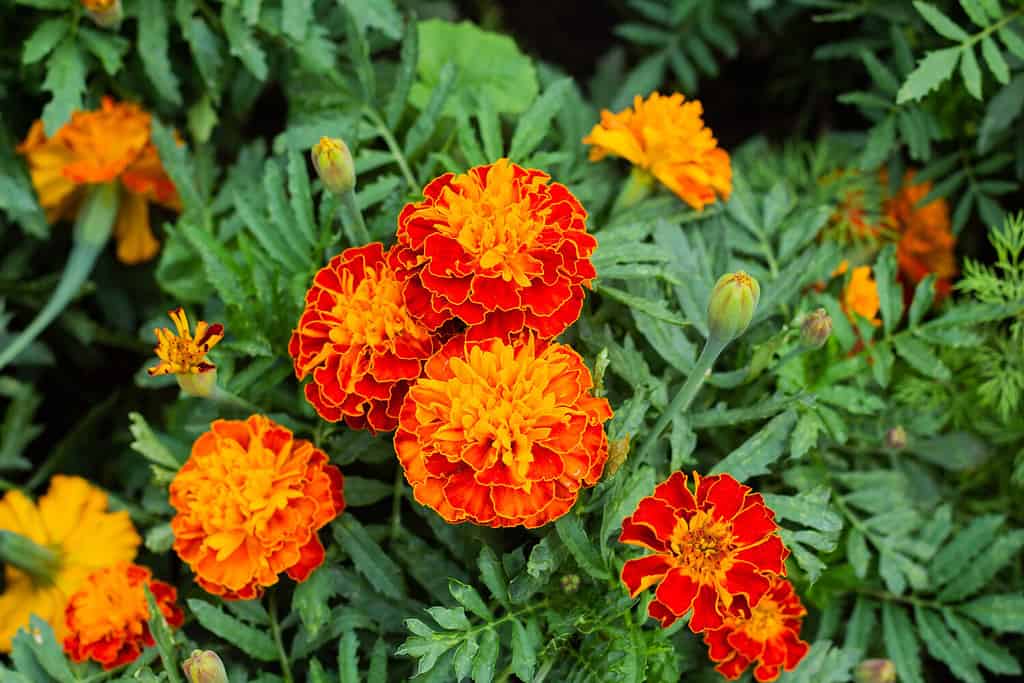
A spinach companion plant, marigolds can also bring beauty to the garden.
©FunFamilyRu/Shutterstock.com
Marigold benefits as a companion plant besides being an object of decoration and celebrations. You can grow marigolds with your spinach due to its ability to repel potential pests from the crops. These beautiful flowers repulse root nematodes. Root nematodes are microscopic organisms that attack spinach, making it look yellow, stunted, and soggy. Marigolds release toxic volatile compounds in the soil that prevent the growth and penetration of these nematodes.
In addition, their strong fragrance keeps aphids, pests, and even rodents like rabbits away from your spinach. Above all, marigolds will add a touch of beauty to your garden.
14. Calendula
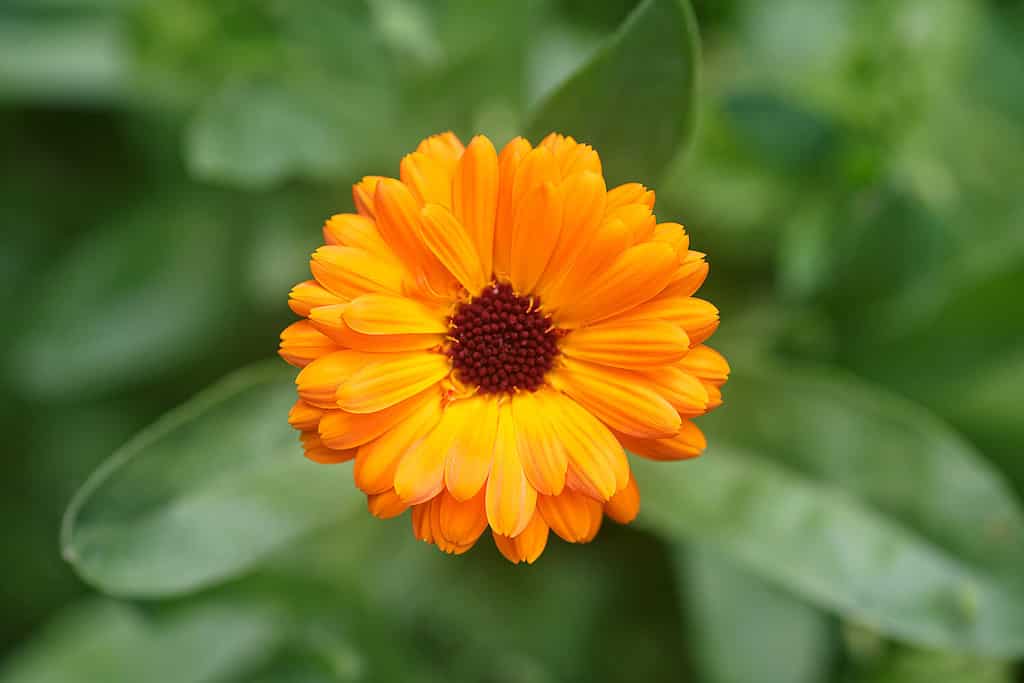
The beautiful calendula blooms can deter rabbits and pests.
©domnitsky/Shutterstock.com
Calendula, a vibrant orange-colored flower that can be used as a medicinal herb, is another great spinach companion plant. Plant your calendula next to your spinach, as it can deter hungry rabbits from attacking your favorite vegetable. It has a pungent smell that irritates rabbits and even pests like aphids and flea beetles.
Moreover, just like marigolds, their colorful appearance is a pleasant addition to your garden.
15. Beans

Just like peas, beans can be great companion plants for your spinach.
©Shulevskyy Volodymyr/Shutterstock.com
Spinach also pairs well with beans, such as bush beans or pole beans. As nitrogen-fixing plants, beans improve the soil quality, thereby helping your spinach to grow faster and larger. Furthermore, beans can act as ground cover for spinach, keeping the soil cooler.
Plants to Avoid as a Companion to Spinach
Here are some of the top plants that you should absolutely avoid planting as companions for your spinach.
1. Potatoes
Potatoes may be fun to grow, but do not grow them with your spinach! Unfortunately, potatoes are heavy feeders and take up all the nutrients from the soil, which will leave your spinach hungry. Furthermore, potato plants attract flea beetles and wireworms, which can damage your spinach crop.
2. Fennel
Growing fennel in your garden needs special consideration because its roots release allotropic chemicals into the soil that eventually inhibit the growth and germination of neighboring plants, including spinach. Planting fennel and spinach together in close proximity will result in stunted spinach growth.
3. Mint
Although mint may generally be considered a good companion plant, there is a reason why it’s not a good companion plant for spinach. Mint grows really fast. So, if planted close to spinach, it may overwhelm your spinach, take up space, and may even compete for nutrients as well.
However, with that said, there are some benefits to planting mint with spinach. Namely, it can help deter pests. So, one method is to plant mint in a pot and place it near your spinach.
4. Sunflower
In general, sunflower is considered a safe companion plant, but with spinach, it is unfortunately not a good option. Sunflowers are known for their vigorous growth and extensive root systems, which can compete with spinach for valuable nutrients, water, and space. Secondly, sunflowers may shade out your spinach due to their tall and imposing structure, potentially reducing the amount of sunlight that reaches the spinach plants.
Summary of the Best Spinach Companion Plants
| Number | Plant | Benefits to Spinach Plant |
|---|---|---|
| #1 | Pea | Provides shade and nitrogen enrichment in the soil |
| #2 | Eggplant | Coexists harmoniously with spinach, as they have separate nutrient needs |
| #3 | Lettuce | Helps resist disease, attracts different pests that have no interest in spinach, leads to higher yields, and keeps the soil cool |
| #4 | Radish | Functions as a trap crop, protecting spinach from leaf miners and pests. |
| #5 | Brassica | Great companions due to different nutrient requirements. |
| #6 | Strawberry | Offers ground cover, maximizes garden space, and resists plant diseases alongside spinach |
| #7 | Oats | Provides shade during hot weather and leaves nitrogen in the soil for spinach |
| #8 | Cilantro | Attracts beneficial pests, like ladybugs and lacewings, to protect spinach |
| #9 | Crimson Clover | Enhance soil health, fixes nitrogen, and adds ornamental beauty |
| #10 | Garlic | Its odor deters pests |
| #11 | Watercress | Low-growing companion that complements spinach without competition |
| #12 | Tomato | Provides shade and helps prevent spinach from bolting |
| #13 | Marigold | Repels root nematodes & keep pests like aphids away from spinach |
| #14 | Calendula | Deters rabbits and pests while adding vibrant beauty to the garden |
| #15 | Beans | Improves soil quality and keeps the soil cool |
The photo featured at the top of this post is © iStock.com/okugawa
Thank you for reading! Have some feedback for us? Contact the AZ Animals editorial team.







